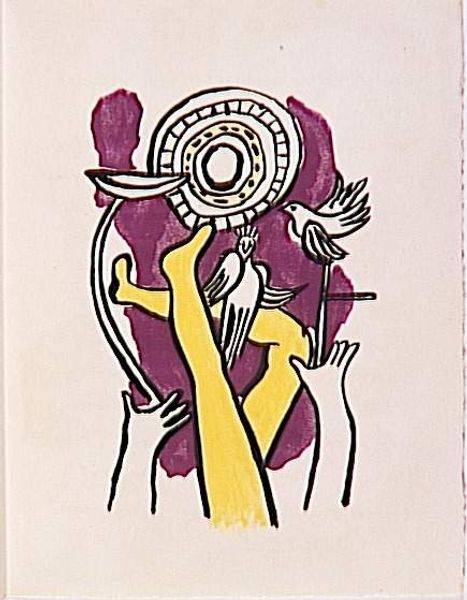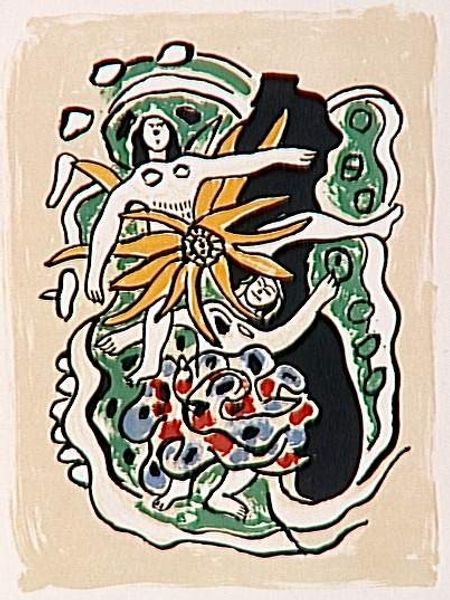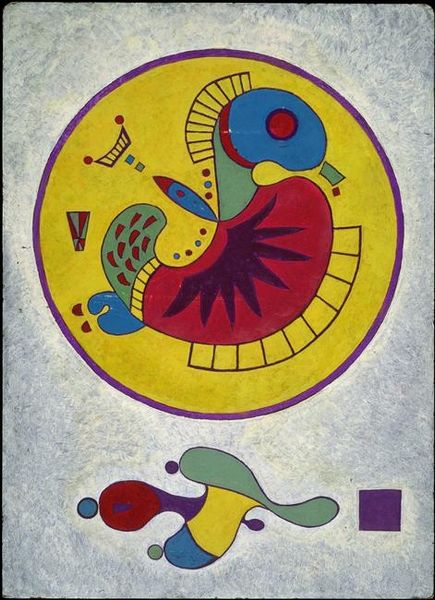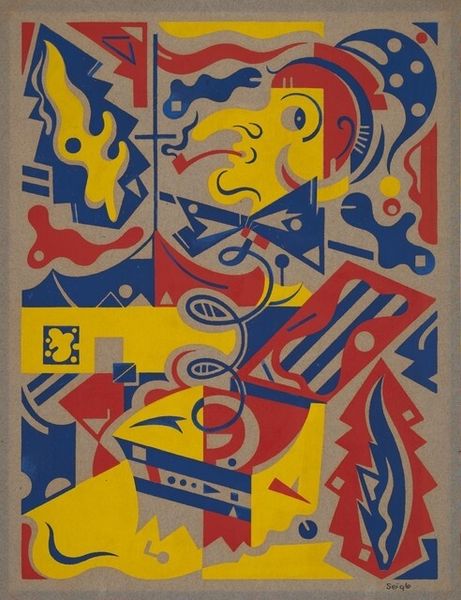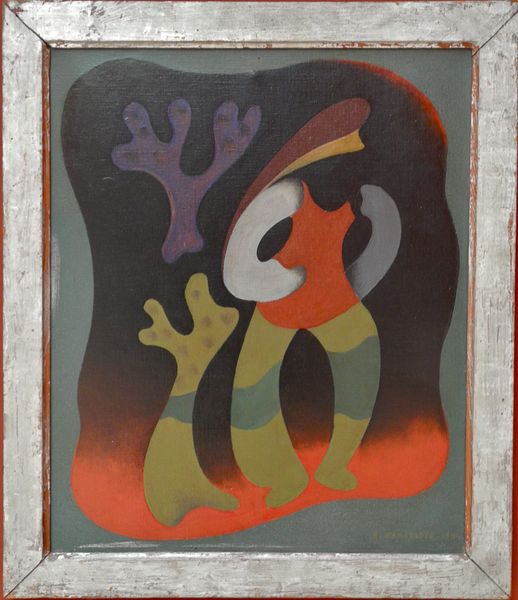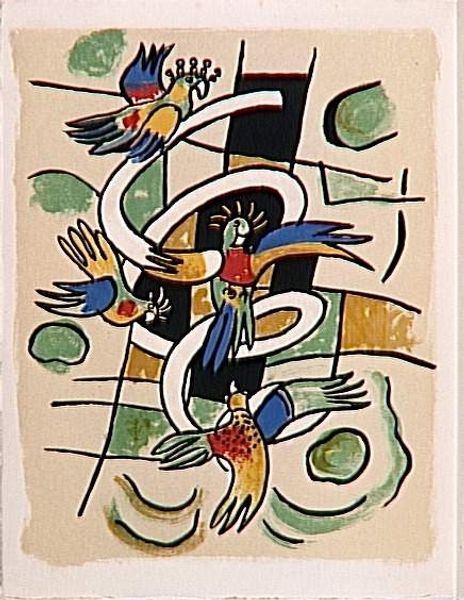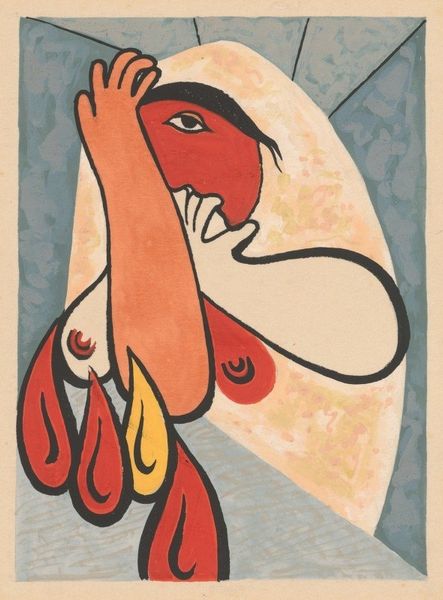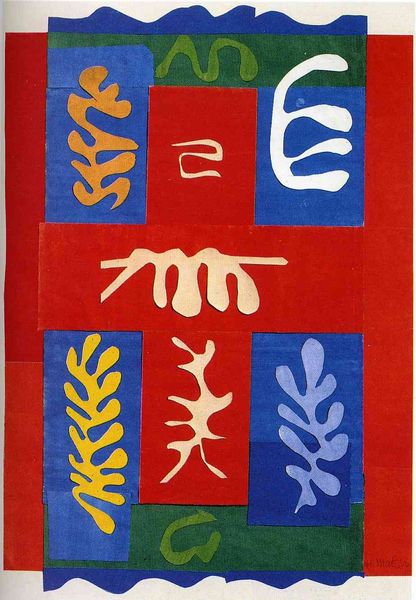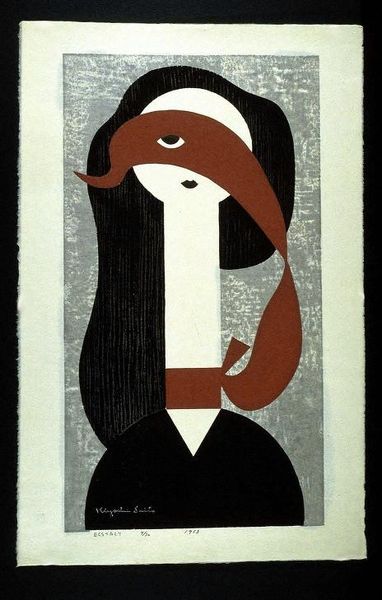
painting, oil-paint
#
cubism
#
painting
#
oil-paint
#
caricature
#
pop art
#
figuration
#
geometric
#
abstraction
Copyright: Fernand Leger,Fair Use
Editor: We’re looking at Fernand Léger's "The Album 'Circus'" from 1950, an oil painting residing in the Musee National Fernand Leger. It has this playful quality with simplified forms; it's like a flattened, almost cartoonish figure. How do you see the structure and composition functioning in this piece? Curator: What strikes me immediately is the stark contrast in Léger’s employment of form. We have very distinct geometric shapes interacting with curvilinear ones. Notice the central rectangular card, sharply defined, and consider its interaction with the organic, flowing blue lines encompassing it. Editor: Yes, it almost feels like a tension between the rigid and the fluid. Is that something you think he was intentionally exploring? Curator: Precisely! Look closely at the palette: the bold yellow background against the primary blues and reds, further accentuated by the black rectangle. These contrasts don't merely depict; they structure a visual dynamic, pitting hard edges against soft curves, flat planes against implied volume. Ask yourself, what is the function of the lunar shape on the upper portion of the canvas, how does that complete the structure? Editor: I hadn’t considered it as deeply as a purely structural element. Curator: Abstraction here serves as a tool to amplify fundamental elements: color, line, and shape. It urges us to focus on how they interact rather than getting lost in representational narrative. It seems Léger focuses the viewer's attention back onto the basic elements and contrasts within the visual space, and how these building blocks work together. Editor: That really sheds light on how to appreciate the piece, seeing it as a conversation between forms rather than just a picture. Curator: Exactly!
Comments
No comments
Be the first to comment and join the conversation on the ultimate creative platform.
